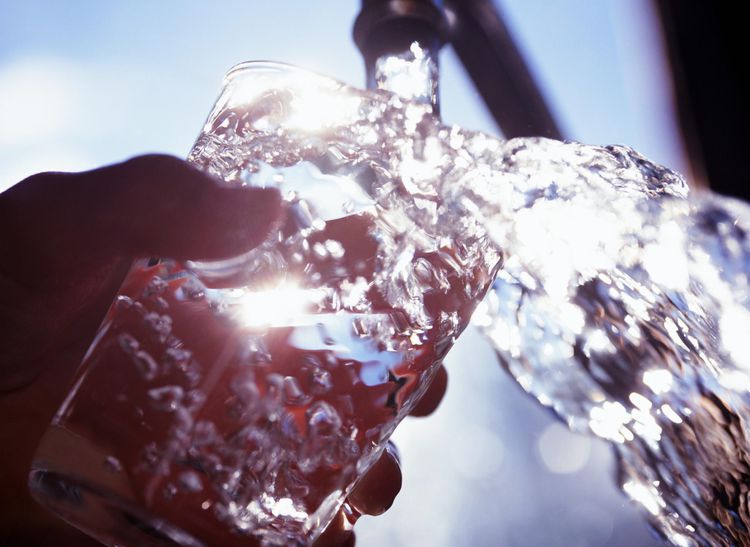what is a water treatment system
An industrial water treatment system treats water so it is more appropriate for a given use, whether for consumption, manufacturing, or even disposal. That said, each system will vary depending on the facility’s needs and many of the technologies that make up these systems can be similar. In general, some of the most-needed industrial water treatment systems typically include:
•Raw water treatment systems
•Boiler feed water treatment systems
•Cooling tower water treatment systems
•Wastewater treatment systems
The technologies selected and in what order they appear in each water treatment system will vary depending on the contaminants that need to be removed, but it is possible to narrow down what you might see in these four common industrial treatment systems.

water treatment system sources
Reverse Osmosis: Is a process for the reduction of dissolved ions (such as salts) from water in which pressure is employed to force liquid (water) through a semi-permeable membrane, which will transmit the water but reject most other dissolved materials. When forced against the membrane surface, the dissolved materials are repelled, while the water molecules are diffused through the membrane molecule by molecule, forming purer water on the other side. Find out more on reverse osmosis installation or learn more about RO systems.
Water treatment systems are designed to target a great number of different contaminants that exist in a wide range of water sources. These water sources can consist of:
Sea Water: Water treatment systems that deal with the desalination of seawater are generally referred to as seawater reverse osmosis systems (SWRO). This technology is designed for the removal of salt and minerals from the ocean and utilizes extremely high-pressure pumps that are required to handle the exceptionally high concentration of contaminants in seawater. The rule is that water which has an excess of 10,000 ppm TDS is considered seawater.
Brackish water: Brackish water contains higher than ideal levels of TDS, which makes it unsuitable for the vast majority of industrial, commercial, and residential applications. Water that is considered brackish consists of both freshwater and saltwater. It contains anywhere between 3,000-10,000 ppm TDS.
Tap Water: Tap water is produced from the city and municipal water, and contains the lowest amount of TDS in comparison to the other water sources. Typically, tap water can possess a TDS value below 1,000 ppm TDS.
Surface water: Water treatment systems such as media filters and ultra filtration work to remove suspended solids and turbidity from surface water. Surface water is produced from natural bodies of water, such as rainfall, and typically runs off surfaces, which ultimately leads to particles and sediments being picked up. These water treatment systems specifically eliminate these unwanted impurities from the water in order to produce clean, freshwater.

How does ro water treatment work
Reverse osmosis is a continuously operating treatment technology that uses pressure to pass source water through a thin membrane and thereby separate impurities from water.
RO works by reversing the principle of osmosis, the natural tendency of water with dissolved salts to flow through a membrane from lower to higher salt concentration. This process is found throughout nature. Plants use it to absorb water and nutrients from the soil. In humans and other animals, kidneys use osmosis to absorb water from blood.
In an RO system, pressure (usually from a pump) is used to overcome natural osmotic pressure, forcing feed water with its load of dissolved salts and other impurities through a highly sophisticated semipermeable membrane that removes a high percentage of the impurities. The product of this process is highly purified water.
The rejected salts and impurities concentrate above the membrane and are passed from the system to drain or onto other processes. In a typical commercial industrial application, 75% of the feedwater is purified. In applications in which water conservation is important, 85% of the feed water is purified.
An RO system uses cross-filtration, where the solution crosses the filter with two outlets: the filtered water goes one way and the contaminated water goes another way. To avoid buildup of contaminants, cross-flow filtration allows water to sweep away contaminant buildup and enough turbulence to keep the membrane surface clean.
Hengtong water treatment equipment is a well-known comprehensive environmental protection water treatment equipment manufacturer,provides pure water equipment, waste water reuse equipment, pure water treatment equipment, nano filtration reverse osmosis equipment, softened water equipment, the company has rich technical experience and production and processing capacity. Its main products cover a variety of world advanced water treatment technologies, such as reverse osmosis system, filtration series, ultra filtration series, EDI electric decolonization series, etc The company is in a leading position in the same industry. It can provide free technical solutions and quotations for industrial water treatment, and provide feasible technical solutions according to customers' water quality and water requirements.